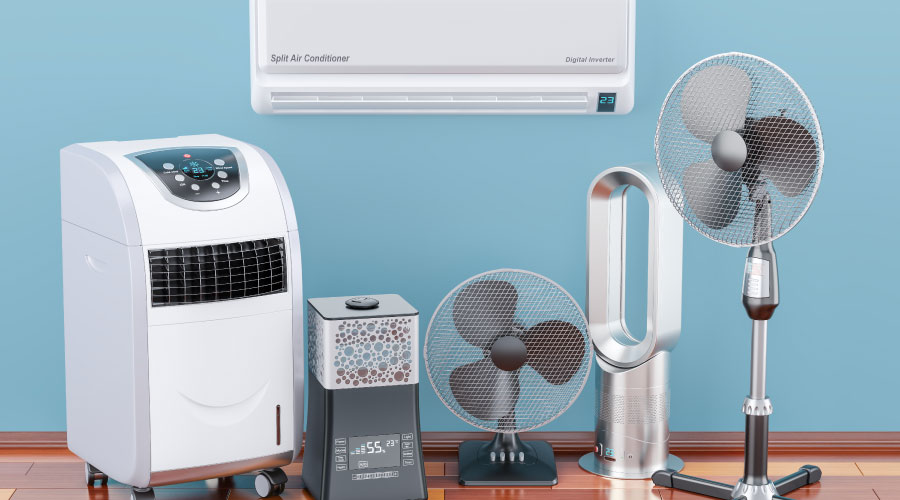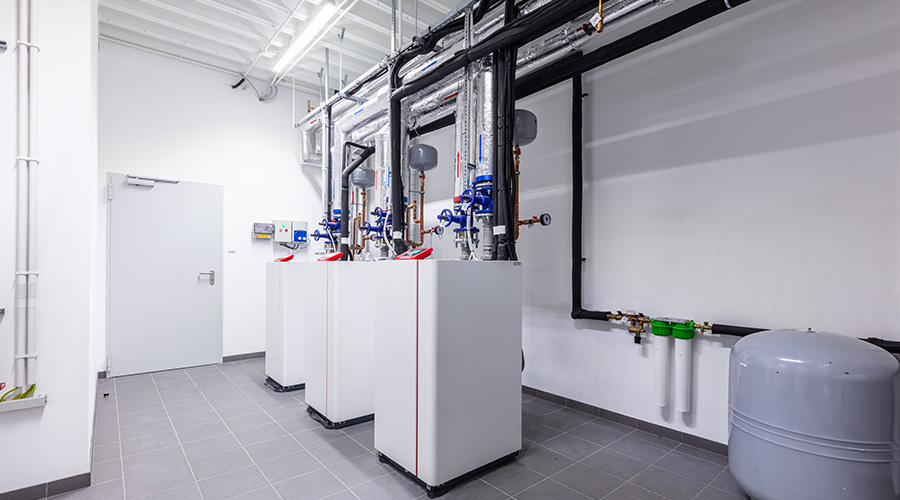Planning and Coordination Helps HVAC Projects Succeed
Facility managers know that major HVAC upgrades can be some of the most difficult projects of their professional careers. There exists tremendous potential for workplace disruption, unanticipated equipment challenges and the wide-ranging opinions from building occupants over the definition of comfort — a factor that should never be underestimated. But a healthy implementation plan, open communication between tenants and service providers, and realistic expectations can prevent HVAC equipment installation from being a bane.
The starting point is proper planning. Every savvy facility manager instinctively knows this. But the mantra can never be repeated often enough, according to Jim Cooke, national facilities operations manager for Toyota Motor Sales U.S. operations. "Plan, plan and plan prior to starting any physical work," he says.
He also recommends developing back-up scenarios for any disruptions to the schedule. Cooke's list of "what-ifs" include unfavorable weather, equipment delivery delays, structural considerations demanded by new HVAC units on existing roofs, crane availability and access, and more.
Rick Martorano, director of space and facility operations for Arizona State University, echoes the sentiment. In his case, he had to plan far in advance to accommodate the needs and requirements of lab users on ASU's campus.
"Make sure you have their buy-in, and leave room in the schedule for unforeseen issues since they're unavoidable on projects of this magnitude."
Kevin Devine, director of engineering for the southern California region of Brookfield Properties Corp. relies heavily on an ongoing plan for replacement.
"We use a strategic and comprehensive replacement program, always trying to hit that elusive moving target," he says. "All equipment has a published life, and we try to stay way in front of that lifespan." (For background on recent HVAC projects that Cooke, Martorano and Devine managed, see "Background: Three Facility Managers, Three Upgrades".)
The motivation to stay out in front of upgrades is common among proactive facility managers, particularly during tight economic times, when every expenditure faces more than the usual scrutiny.
"As with most companies, core capital funds are very limited, and we need to focus on where our dollars will give us maximum value," Cooke says. "We track all major equipment via our CMMS and our facility condition assessments and review them each fiscal year budget cycle."
When planning major replacements of HVAC equipment, facility managers should consider the age of equipment, repair history and cost, potential impact of downtime on critical business functions, indoor air quality benefits accomplished by the upgrade, estimated energy efficiency anticipated from new equipment, refrigerant requirements (plus any known or anticipated phase-outs), future expansion or renovation plans for a particular building (including re-roofing), utility company energy rebate programs, plus any state or federal tax benefits that result from the change.
HVAC Challenges
One challenge for every major facility project is the number of parties involved. It's the facility manager's job to coordinate the needs and activities of those various groups, both in-house and third-party.
In Martorano's case, the company doing the installation also did the initial design. They were ready to start work on schedule.
"But we had to bring in our own project manager to coordinate activities and help us manage the multiple lab owners' schedules," he says. "Our biggest challenge was scheduling the down time needed to install the systems in each lab or zone."
ASU's solution was to call for volunteers, letting each lab select a time that worked for its research schedule. As a result, Martorano's team maintained an open scheduling window to fit everyone in, and then wrapped up the project at year-end when campus facilities closed down for the holidays.
With so many parties involved, it's no wonder that facility managers often find their negotiating skills put to the test. "Recently we did a chiller overhaul," Devine says. "There was a difference of perception in what's acceptable by the vendor and what's acceptable by the owner. It was a real eye-opener."
That difference in perception required some field changes but eventually the vendor and owner came to agreement.
Devine says adapting schedules is another hurdle to be overcome. Some project scheduling issues could be attributed to tenant needs, but others were entirely related to weather and climate — especially important considerations for HVAC upgrades in Los Angeles.
"For VFD replacement, we need to consider that we're in Southern California," he says. "Certain times of the year, or even of the day, just aren't good for that kind of work, and we need to keep that in mind."
Jobsite Conditions
For Cooke, one of the challenges was related to jobsite conditions. "What we found out from this experience is that as we cleaned sections of the ductwork each night or weekend, once the HVAC system was activated for the next morning, dust particles from other sections of the ductwork that had not yet been cleaned became airborne and ended up in the airstream and on desks and other horizontal surfaces," says Cooke.
To address that challenge, Cooke adjusted the cleaning plan and schedule to clean common duct runs at once, or if not feasible, to clean common duct runs from the HVAC unit outwards to keep the dust particles to a minimum until the entire run of ductwork was clean.
Cooke also scheduled the cleaning to end earlier each morning. That shift in time allowed for dusting of all work surfaces after the morning equipment startup and prior to associates arriving for work. Toyota also had a daytime "site enhancement" person available to address anything that might have been missed by the janitorial staff after the workday had begun.
Related Topics:













